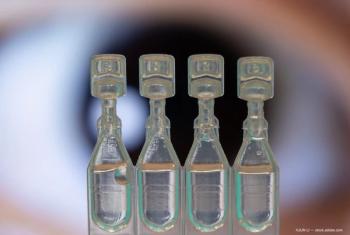
Poor correlation found between intraoperative pachymetry, postoperative OCT
San Francisco-Intraoperative subtraction pachymetry may be less accurate and more prone to measurement error than postoperative optical coherence tomography (OCT) measurements, according to Yohko Murakami, MA, Stanford University School of Medicine, Stanford, CA.
San Francisco-Intraoperative subtraction pachymetry may be less accurate and more prone to measurement error than postoperative optical coherence tomography (OCT) measurements, according to Yohko Murakami, MA, Stanford University School of Medicine, Stanford, CA.
Murakami presented information on a prospective, randomized trial in which 100 eyes of 50 consecutive patients were treated for myopia using custom wavefront-guided LASIK. In each patient, one eye was treated with a femtosecond laser and the other eye was treated with a mechanical microkeratome. Patients were followed for a year.
Flap thickness as measured by intraoperative subtraction pachymetry was 114 ± 20 µm in the femtosecond group and 126.6 ± 14.7 µm in the mechanical microkeratome group. The range of thickness was 68 to 151 µm in the laser group and 101 to 149 µm in the mechanical microkeratome group.
OCT imaging revealed an achieved flap thickness of 111.7 ± 6.3 µm in the laser group and 148.3 ± 8.2 µm in the mechanical microkeratome group. The range of achieved flap thickness was 104 to 127 µm in the laser group and 137 to 164 µm in the mechanical microkeratome group.
“There’s a very poor correlation between intraoperative subtraction pachymetry and postoperative OCT imaging,” Murakami said. “Intraoperative subtraction pachymetry both over– and underestimates flap depth.”
In comparing the two instruments, Murakami and her colleagues noted that the flaps created with the femtosecond laser were more uniform than those created with the mechanical microkeratome.
“Looking at the postoperative OCT findings, we found that the femtosecond group had a very tight range of about 20 µm and a mean of 109 µm with a standard deviation of five,” she concluded. “The mechanical keratome group had a range that was about twice as large, about 40 µm for central measurements. The mean in the mechanical keratome group was 145 with a standard deviation of 11, which was also twice as much as femtosecond laser group.”
Newsletter
Don’t miss out—get Ophthalmology Times updates on the latest clinical advancements and expert interviews, straight to your inbox.














































.png)


